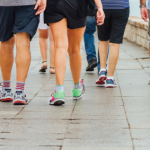Bourgault et al recently studied the effects of a program that combined exercise therapy and educational/psychological tools for self-management of FMS. Twenty-three patients received intervention and were compared with 20 patients on a wait list.12 Patient empowerment and active patient participation were integral components of the intervention, teaching patients to self-manage their illness and to take control over their pain management. Results after 11 weeks of treatment indicated that this interdisciplinary self-management intervention for FMS was effective in improving the patients’ global impression of change in terms of pain, functioning and QOL as well as in increasing their perceived pain relief, both at the end of the program and at three months post-intervention.
Martins et al found patients with FMS benefited from a weekly interdisciplinary program (WIP) consisting of educational activities, physical therapy, stretching, ergonomics, posture guidance combined with cognitive-behavioral strategies and approaches to psychosocial and occupational factors.13 The team included a physician, occupational therapist, physiotherapist, social worker and psychologist. The WIP group showed an increase in functional capacity and motivation for exercise, as well as greater control of such symptoms as sleep, anxiety and depression. Depression and anxiety were both decreased in the WIP group compared with the control group, and better sleep patterns were noted in participants in the weekly program.13
Holistic Approach
Holistic forms of exercise, such as tai-chi, yoga and Pilates, may be especially beneficial for those with fibromyalgia due to the potential psychosocial and emotional benefits.1
Pilates: Pilates is an increasingly popular exercise approach that focuses on improving overall body flexibility and strength, with a strong emphasis on core strength, improved posture and effective breathing techniques, all of which are commonly impaired in patients with FMS.14 Due to the low-impact nature of Pilates, patients with fatigue may tolerate it better than other forms of aerobic exercise.
Altan et al performed a study in which they compared pain, Fibromyalgia Impact Questionnaire (FIQ) scores, number of tender points, algometric score, chair test and Nottingham Health Profile (NHP) (assessed Quality of Life) for a group that participated in Pilates and a group that performed only a home exercise program. Measurements were taken pretest, immediately post-test (12 weeks), and at a 12-week follow-up (24 weeks). Results showed that in the Pilates group there was an improvement in pain and FIQ at 12 weeks, and FIQ continued to improve at 24 weeks. There was also an improvement in number of tender points, NHP and algorithmic score. The control group, which consisted of a home exercise program, showed no improvement in pain or FIQ at either the 12- or 24-week follow-up. However, there was an improvement in number of tender points and algorithmic score at both 12 and 24 weeks.14
